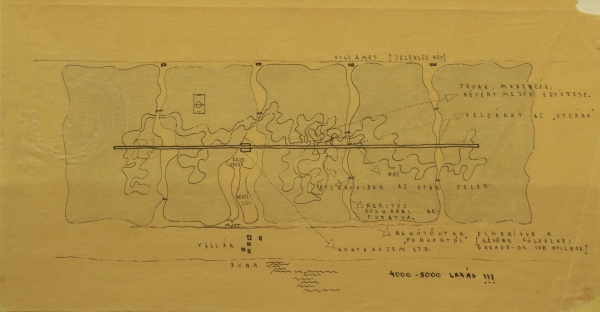Antecedents
Text: János Gerle

Szalagház, helyszínrajz
I would like to especially focus on a unique feature of Zalotay’s architecture. Possessing an extraordinary clarity, sense of purpose and toughness when phrasing the theory of his concept or projects its macrostructure, the inner correlations, Zalotay still creates the details of forms with a high degree of inner intuitiveness and expressivity. The same type of duality features his exemplary forerunner, Le Corbusier (being most probably his most sensitive follower in Hungary) when designing the roofing of the Unité de l’Habitation or the chapel in Ronchamp. In comparison in Zalotay’s case I have the feeling that the inevitable inner constraint is ever stronger to create forms free from any kind of limitations and prototype only as experiencing the task itself. As this power is instinctive, I feel it also strongly strains him even when he intends to create his macrostructures as consciously as possible. His horizontal plans with free formation are almost unparallelled in Hungarian architecture as they are not the „softened” versions within the logic of a freely chosen structure or a soft form required by soft structures. The approach György Szegő has chosen is a highly appropriate one: Zalotay works with stone, earth and wood in a kind of deeply felt inner harmony.



